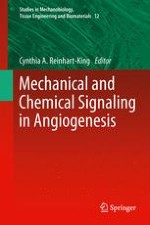2013 | OriginalPaper | Buchkapitel
Microfluidic Devices for Quantifying the Role of Soluble Gradients in Early Angiogenesis
verfasst von : Patrick Benitez, Sarah Heilshorn
Erschienen in: Mechanical and Chemical Signaling in Angiogenesis
Verlag: Springer Berlin Heidelberg
Aktivieren Sie unsere intelligente Suche, um passende Fachinhalte oder Patente zu finden.
Wählen Sie Textabschnitte aus um mit Künstlicher Intelligenz passenden Patente zu finden. powered by
Markieren Sie Textabschnitte, um KI-gestützt weitere passende Inhalte zu finden. powered by
